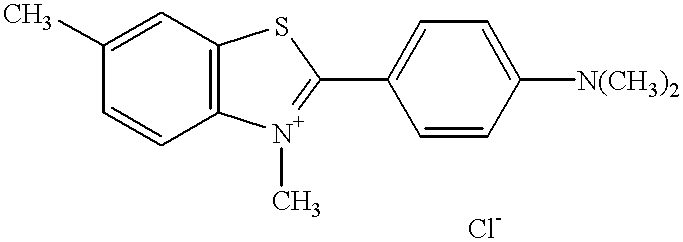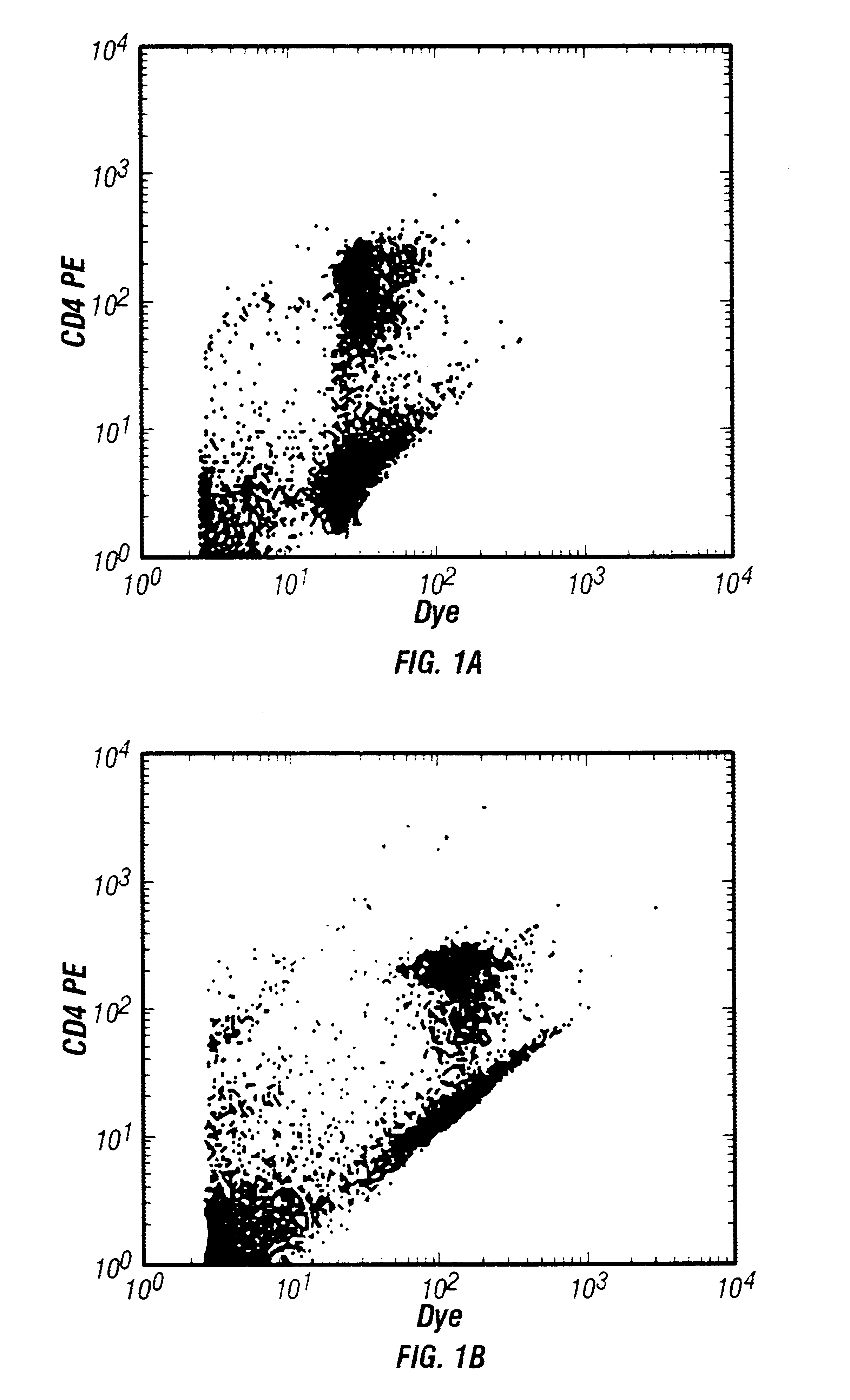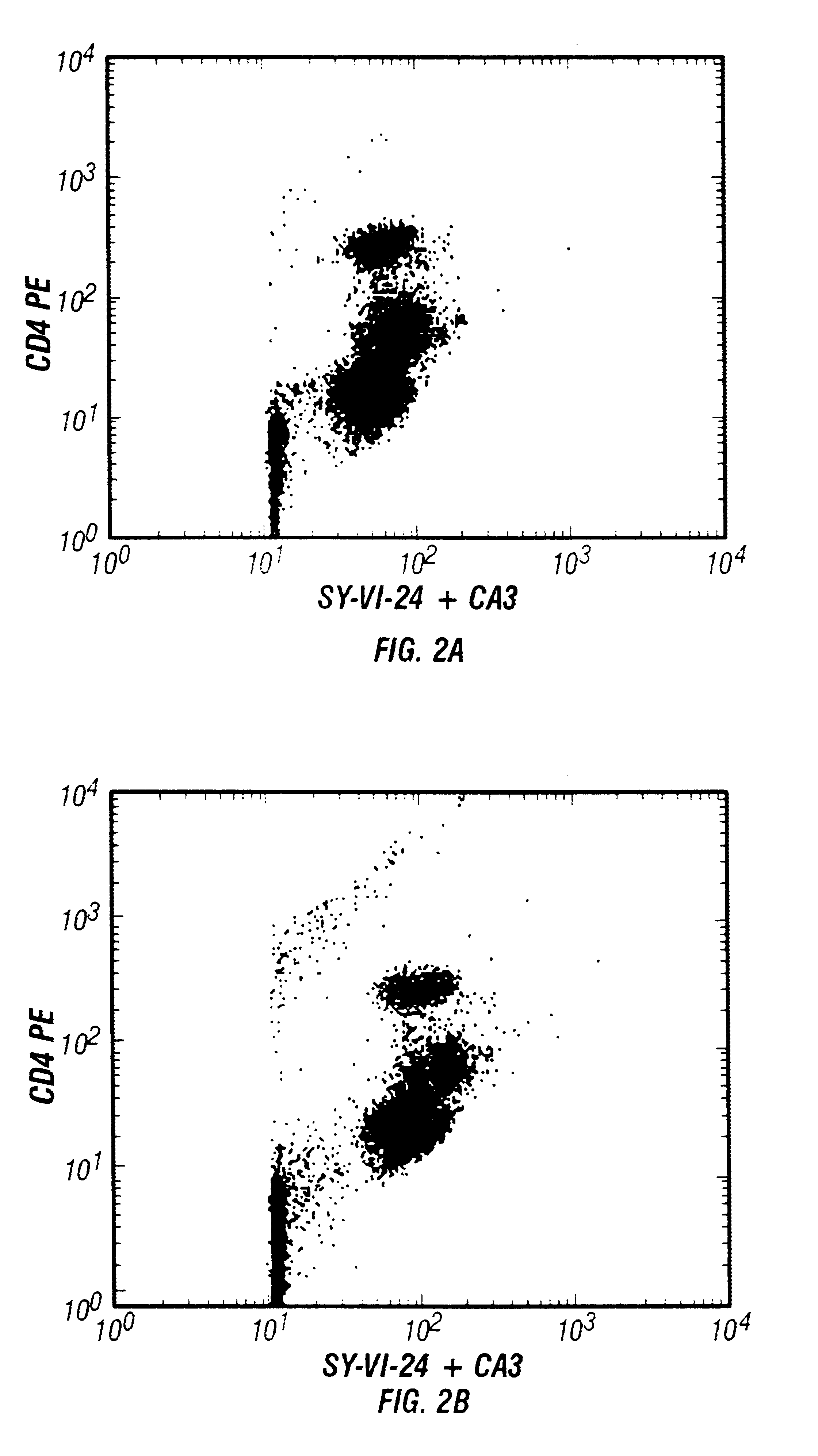Use of dimly fluorescing nucleic acid dyes in the identification of nucleated cells
- Summary
- Abstract
- Description
- Claims
- Application Information
AI Technical Summary
Benefits of technology
Problems solved by technology
Method used
Image
Examples
example 1
Thioflavin T or another fluorescent nucleic acid dye, SY-VI-24, were used to stain whole blood or diluted whole blood by admixing 50 .mu.L whole blood, 20 .mu.L dye solution, and a phycoerythrin tagged anti-CD4 monoclonal antibody (CD4-PE). After staining the sample we diluted with approximately 0.5 ml of FACS.RTM. Lysing Solution.
Each sample was analyzed on a FACSort flow cytometer at an excitation wavelength of 488 mn and a 530 / 30 filter for green fluorescence and 585 / 42 filter for yellow fluorescence.
FIG. 3 illustrates dot plots of CD4-PE versus thioflavin T as a function of blood concentration using whole blood and blood diluted 1:10 and 1:100. Briefly, using subsaturating amounts of SY-VI-24 as the nucleic acid dye, a 10 fold decrease in blood cell concentration caused a 10 fold increase in fluorescence from the dye. When lymphocytes were stained simultaneously with SY-VI-24 and CD4 antibody conjugated to the yellow fluorescing tag phycoerythrin (PE), increased fluorescence fro...
example 2
The above experiment was repeated using a nucleic acid dye mixture, SY-VI-24 and chromycin A3 (CA3). Each test used 25 .mu.g CA3 and 1 ng SY-VI-24, at saturating concentrations. The results are shown in FIG. 2.
FIG. 2 shows dot plots of CD4-PE versus nucleic acid stain mixture as a function of blood cell concentration. Panels A-C in FIG. 2 show dot plots of CD4-PE versus nucleic acid dye fluorescence due to the mixture of SY-VI-24 and chromycin A3 (CA3). Results with whole blood are shown in FIG. 2A, and with blood diluted 1:8 and 1:32 before staining in FIGS. 2B and 2C, respectively. There is almost no difference in the results with blood cell concentration varied over this 32 fold range.
FIG. 3 shows similar results where a single dye, thioflavin T, is used at essentially saturating concentration to stain whole blood (FIG. 3A) or the same dye concentration is used to stain blood diluted 1:10 or 1:100 (FIGS. 3B and 3C respectively). Again, the results do not change significantly when...
PUM
| Property | Measurement | Unit |
|---|---|---|
| Wavelength | aaaaa | aaaaa |
| Concentration | aaaaa | aaaaa |
| Wavelength | aaaaa | aaaaa |
Abstract
Description
Claims
Application Information
 Login to View More
Login to View More - R&D
- Intellectual Property
- Life Sciences
- Materials
- Tech Scout
- Unparalleled Data Quality
- Higher Quality Content
- 60% Fewer Hallucinations
Browse by: Latest US Patents, China's latest patents, Technical Efficacy Thesaurus, Application Domain, Technology Topic, Popular Technical Reports.
© 2025 PatSnap. All rights reserved.Legal|Privacy policy|Modern Slavery Act Transparency Statement|Sitemap|About US| Contact US: help@patsnap.com



